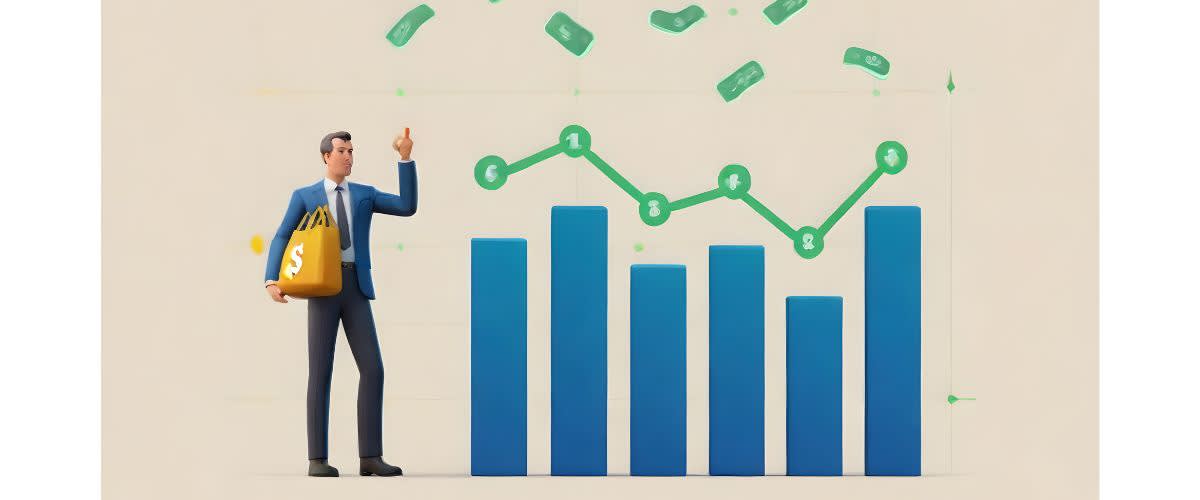Yield in finance: a comprehensive guide

What is yield in finance?
Yield is a fundamental concept in finance and is used to measure the return on investment generated by a particular asset or security. In other words, it is the amount of income earned from the investment relative to the price paid to acquire it. It plays a crucial role in evaluating the potential returns of various investment options and helps investors make informed decisions to optimize their portfolio.
Different financial instruments use yield to describe their returns. For instance:
- In the case of bonds, yield refers to the interest payments that the investor receives relative to the bond's price. It is determined by its coupon rate, which is the interest rate paid on the bond's face value. A bond with a higher coupon rate will have a higher yield, all other factors being equal.

- In the case of stocks, this value represents the dividend payments paid by the company relative to the stock's price. Dividend yield is calculated by dividing the annual dividend per share by the current stock price. Assets with a higher dividend yield can be attractive to income-seeking investors.

- Mutual funds also use this metric to describe their total return on investment, including both capital gains and dividends. They may have different types of yield, such as current yield and yield to maturity. The first one represents the income generated by the fund's investments over the past year, while the second type estimates the expected total return over the life of the fund.

Types of yield and how they are calculated
The calculation process is different for each investment type and it's crucial to know which method to use for each type of investment.
- The Yield To Maturity (YTM) formula is the most common method used to calculate yield for bonds, and it considers various factors such as the coupon rate, market price, and time to maturity. This formula helps investors determine the annual rate of return that they can expect to earn from their bond investment.
YTM=(C+(F-P)/n)/(F+P/2)
- C= Annual coupon payment
- F= Face value of the bond
- P= Price of the bond
- n= Number of years to maturity
- On the other hand, dividend yield is a popular method used for calculating yield for stocks. It involves dividing the annual dividend payments by the stock's current market price, and it provides a percentage return on investment that investors can expect to earn. This calculation is useful for investors who are interested in earning regular income from their stock investment.
DY=ADP/CSP*100%
- DY= Dividend Yield
- ADP= Annual Dividend Payment
- CSP= Current Stock Price
- For mutual funds, yield is calculated as the sum of capital gains and dividend payments earned by the fund over a particular period. This value gives investors a more comprehensive picture of the fund's performance over time, including both capital gains and dividend payments.
MFY=(CG+DP)/A
- MFY= Mutual Founds Yield
- CG= Capital Gains
- DP= Dividend Payments
- A= Average net asset value
In addition to these commonly indexes, there are other types of yield that investors should be aware of in specific contexts:
- One such type is the yield to call, which is used when a bond is callable before it reaches maturity. Callable bonds give the issuer the option to redeem the bond before its maturity date, which means that investors may receive less interest than they originally anticipated. In this scenario, the yield to call calculation takes into account the potential return if the bond is called at the earliest possible date.
- Investors should also be aware of the yield to worst, which is the lowest potential yield an investor can earn if certain conditions are met.
For example, if an investor holds a bond that has a call option, this calculation takes into account the potential return if the bond is called at the earliest possible date.
Any of them provides a clear understanding of the potential returns for a particular investment and enables investors to evaluate the performance of their portfolio. Overall, having a good understanding of yield calculation is crucial to make informed investment decisions and maximize the returns.
By considering the various metrics available and comparing them across different investments, investors can build a diversified portfolio that meets their financial goals.
Capitalise on volatility in share markets
Take a position on moving share prices. Never miss an opportunity.
71% of retail CFD accounts lose money.

Some examples of yield:
An example of yield in finance can be seen with a bond investment. Let's say an investor purchases a bond with a face value of $1,000, a coupon rate of 5%, and a maturity date of 10 years. The annual coupon payment for this bond would be $50 (5% of $1,000), and the yield at the time of purchase would depend on the bond's current market price.
If the bond is trading at par, or its face value, the yield would be equal to the coupon rate of 5%. However, if the bond is trading at a discount, say for $900, the yield would be higher than the coupon rate. In this case, the yield would be calculated using the yield to maturity (YTM) formula, which takes into account the bond's current market price and time to maturity. If the YTM for this bond is 6%, the investor would earn an annual return of $60 on their $900 investment, providing a yield of 6.7%.
Another example of yield can be seen with a stock investment that pays dividends. If an investor purchases a stock for $50 and it pays an annual dividend of $2 per share, the dividend yield would be 4% ($2 divided by $50). This means that for every dollar invested in the stock, the investor would receive a return of 4 cents in the form of dividends.
The calculation of yield depends on the investment type and formula used to measure it but understanding these examples can help investors understand the calculation method of this index and make informed decisions.

What does yield represent?
- Yield in finance represents the return on investment, usually expressed as a percentage.
- It is a key metric that investors use to evaluate the performance of an investment and compare it with other investment opportunities.
- A higher yield can indicate a higher return on investment, but it's important to consider the risk associated with the investment as well.
- Higher yields often come with higher risk, so it's essential to balance risk and return when making investment decisions.
It also represents the income earned from an investment, whether it's through interest payments, dividends, or capital gains. By understanding the different types of yield and how they're calculated, investors can make more informed decisions when choosing assets that fit their financial goals and risk tolerance.
Whether you're a seasoned investor or just starting, understanding yield is a vital step in striving to achieve your financial goals.
Not investment advice. Past performance does not guarantee or predict future performance.










